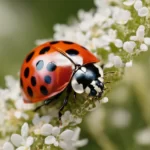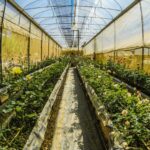South Carolina, with its picturesque landscapes and temperate climate, offers an ideal environment for a diverse range of flora and fauna. Among the verdant diversity, palm trees hold a special place, symbolizing the warm, southern charm of the state. This article explores the presence of palm trees in South Carolina, highlighting the state’s unique suitability for certain species of these iconic tropical and subtropical plants. Whether you’re strolling along the sandy beaches of the coast or meandering through the inland urban landscapes, the sight of palm trees contributes significantly to the state’s scenic beauty and ecological diversity.
The Climate of South Carolina
South Carolina’s climate is predominantly humid subtropical, characterized by hot summers and mild winters, especially along the coast and in the lower inland areas. This climate is favorable for many palm species, which typically thrive in warm and somewhat humid conditions. The state is divided into several climate zones, from the Atlantic coastal plain to the Piedmont plateau and the Blue Ridge Mountains. Each zone presents unique growing conditions for plants. Palms, in particular, are mostly found in the coastal and Piedmont areas, where the milder winter temperatures and longer growing seasons align with their needs for warmth and sunlight.
The variation in temperature and humidity across these zones influences which palm species can be successfully grown. For instance, while the coastal areas can support a wider variety of palms thanks to their milder winter temperatures, the regions further inland and at higher elevations might only be suitable for the hardiest of palm species, capable of withstanding occasional cold snaps.
Palm Trees Native to South Carolina
One cannot discuss palm trees in South Carolina without mentioning the Sabal palmetto, also known as the Cabbage Palmetto. This palm is not only native to the state but is also designated as the state tree, symbolizing South Carolina’s enduring spirit. The Sabal palmetto is prominently featured in the state’s history and landscapes, lining the streets of many coastal communities and standing tall in both rural and urban settings. Its resilience and elegance make it a favorite among residents and a significant contributor to the state’s natural and cultural heritage.
Aside from the Sabal palmetto, South Carolina’s warm and humid climate supports a variety of other palm species, though none are as iconic or widespread as the state tree. These include smaller, understory palms that flourish in the state’s forests and coastal areas, contributing to the biodiversity and ecological balance of these environments.
Popular Non-native Palm Trees in South Carolina
In addition to its native palms, South Carolina is home to several non-native palm species that have adapted well to the state’s climate, enriching the diversity of its landscapes. Among these, the Windmill Palm (Trachycarpus fortunei) stands out for its cold hardiness, making it a popular choice not just along the coast but also in the cooler Piedmont and even foothill regions of the state. Its tolerance to lower temperatures and its distinctive, fan-shaped leaves make it a favorite among gardeners looking to add a touch of the exotic to their outdoor spaces.
The Pindo Palm (Butia capitata), with its graceful, blue-green fronds and robust trunk, is another non-native species that has found a favorable home in South Carolina’s warmer zones. Known for its edible fruit and ornamental appeal, the Pindo Palm is often planted in residential landscapes and public gardens alike, offering a stunning visual and a taste of the tropics.
Queen Palms (Syagrus romanzoffiana), while less cold-hardy, are also cultivated in the more temperate regions of South Carolina, especially in protected urban areas where microclimates offer them a safe haven from the chillier winter temperatures. Their elegant, arching fronds and tall, slender trunks provide a dramatic vertical element to the landscape, reminiscent of classic palm-lined avenues in warmer climates.
Planting and Caring for Palm Trees in South Carolina
Successful cultivation of palm trees in South Carolina begins with selecting the right species for the local climate and ensuring that the planting site meets the palm’s needs for sunlight, soil type, and drainage. Palms generally prefer well-drained soil and a location that receives ample sunlight for the majority of the day. When planting a palm, it is crucial to dig a hole twice as wide as the root ball but no deeper, to encourage root spread without burying the trunk too deeply.
Watering is another critical aspect of palm care, especially during the establishment phase. Young palms require regular watering to develop a strong root system, but once established, they are relatively drought-tolerant. However, during prolonged dry spells, additional watering may be necessary to keep them healthy.
Fertilization plays a vital role in the health and growth of palm trees. A slow-release palm-specific fertilizer applied in the spring and late summer can provide the necessary nutrients for optimal growth and development. Additionally, as cold weather approaches, mulching around the base of the palm can help insulate the roots, providing extra protection against sudden temperature drops.
Winter care is particularly important for palms in the cooler parts of South Carolina. Wrapping the trunk with burlap or using a frost blanket can offer protection during brief cold snaps. For the most cold-sensitive species, planting in a sheltered location or utilizing portable protection methods is advisable when temperatures are expected to plummet.
Challenges and Solutions for Growing Palms in South Carolina
Despite the generally palm-friendly climate of South Carolina, gardeners may face several challenges in growing these tropical and subtropical trees. Pests such as the palmetto weevil and diseases like lethal yellowing can pose significant threats to palm health. Regular monitoring and early intervention are crucial for managing these issues. Employing integrated pest management (IPM) strategies, such as encouraging natural predators, can help control pest populations without resorting to heavy chemical use.
Weather-related challenges, particularly from hurricanes and cold winter temperatures, also impact palm trees in South Carolina. Strategic planting in sheltered locations, proper pruning to reduce wind resistance, and physical protections such as wraps and covers during cold weather can mitigate these risks. Additionally, selecting palm species that are well-suited to withstand local weather extremes is essential for long-term success.
Conservation and Environmental Impact
The conservation of native palm species and their habitats is vital for maintaining South Carolina’s ecological balance and biodiversity. Efforts to protect areas where Sabal palmetto and other native palms grow are crucial for preserving the state’s natural heritage. These conservation initiatives often involve community participation and education, highlighting the importance of native species in local ecosystems.
Palms play a significant role in their ecosystems, providing habitat and food for various wildlife species. The preservation of palm trees contributes to biodiversity, supports local wildlife, and enhances the resilience of natural areas to environmental changes. By planting and caring for palm trees, South Carolinians can contribute to environmental conservation efforts and ensure that these iconic trees continue to thrive for generations to come.
Conclusion
Palm trees are an integral part of South Carolina’s landscapes, offering aesthetic beauty, ecological benefits, and a connection to the state’s cultural identity. From the native Sabal palmetto to various non-native species, palms enhance the diversity and appeal of South Carolina’s gardens and public spaces. By understanding the specific needs of these plants and addressing the challenges they face, gardeners and landscapers can successfully integrate palm trees into South Carolina’s verdant tapestry.
Encouraging the cultivation of palm trees not only beautifies the environment but also supports local ecosystems and conservation efforts. As South Carolina continues to embrace these majestic trees, the palm stands as a symbol of resilience, diversity, and natural beauty within the state’s flourishing landscapes.




